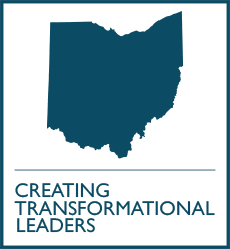Feb 3

Halting a Crisis: The Power of “We” in Addiction Medicine
This article by second-year College of Medicine student Jamie Pandey continues an ongoing series about the opioid epidemic and how NEOMED is training future physicians and pharmacists to help.
As a College of Medicine student, it can be difficult to balance keeping up with studies and staying up to date on news and important health concerns like the opioid crisis. So I was glad for our American Academy of Family Physicians Family Medicine Interest Group to host Robert Zukas, D.O., associate program director of St. Rita’s Family Medicine Residency program in Lima, Ohio, for a presentation on current issues in addiction medicine and how the pandemic has impacted the opioid crisis.
Dr. Zukas began with a reference to the “PBS News Hour,” which has called the opioid crisis “a pandemic within a pandemic.” COVID-19 has complicated an already difficult situation and the U,S, has seen the highest number of overdose deaths ever recorded in a 12-month period.
However, the medical field has seen some progress in how they’re combating the crisis: Prescriptions per person for opioids dropped 32% from 2008 to 2017. And in Ohio, there have been incentives for physicians to receive their Medication-Assisted Treatment (MAT) waiver training in treating substance use disorders.
After presenting an overview of the current state of the opioid crisis, Dr. Zukas turned to case-based questions so we students could see real examples of what to expect and how to treat future patients dealing with opioid addiction, known in health care as Opioid Use Disorder (OUD). [Editor’s note: Third-year College of Medicine students complete MAT training to learn about treating opioid use disorder in the Prerequisite to the Clinical Curriculum course.]
Dr. Zukas also elucidated the difference between dependence and addiction. I was interested to see the distinction he made: Dependence, characterized by tolerance and withdrawal, is likely to occur with opioid use; there is a risk for addiction, but feeling physical withdrawal symptoms is not enough for a person to be considered addicted. The line between dependence and addiction is crossed when someone feels a craving or strong desire to use opioids, or starts being unable to fulfill their usual activities and obligations, but continues using the drug despite these physical or psychological problems.
Most important, Dr. Zukas emphasized leaving judgment behind in order to help the patient. As he put it, “Opioid Use Disorder is a medical problem. Be caring and compassionate. Your response could invite [or] deter your patient to [or] from treatment for years to come.”
It’s important to me that there’s equitable and humanistic treatment for everyone. I appreciated Dr. Zukas’s point that the opioid crisis has struck many families, and that the best way to approach OUD is to treat it as you would treat hypertension: a physical disorder that is a lifelong disease, not a character flaw.
Dr. Zukas said he tells his patients that as physicians, “The only way we fail is if you don’t show up again. We’ll keep helping you until you get out of this.” There may be setbacks during recovery from substance abuse, he said – but there is a simple, subtle power in saying “we.”
It was inspiring to see Dr. Zukas demonstrate the commitment to (and partnership with) a patient that a physician can have. And he left us with a final, reassuring thought: Even though medical school can often feel overwhelming, the time we spend will pay off in the future, when we can offer our patients ourselves as partners in their pursuit of wellness.

